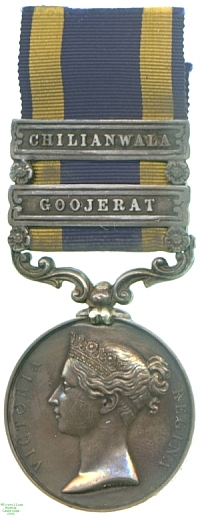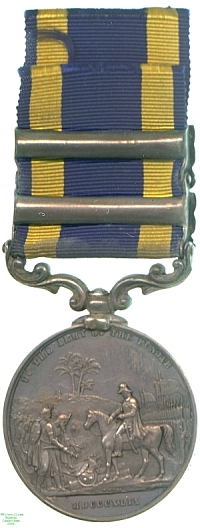
Obverse, a bust of Queen Victoria

Reverse, a general on horseback receiving the Sikhs' surrender before a hill topped with a palm tree

Obverse, a bust of Queen Victoria |

Reverse, a general on horseback receiving the Sikhs' surrender before a hill topped with a palm tree |
The city of Multan in the Punjab province of India was taken over by the Sikh ruler Ranjit Singh in the early 19th century. It thus became part of the Sikh kingdom of the Punjab that was brought under British East India Company control in the First Anglo-Sikh War. It was also the site of considerable Sikh unrest after this defeat, which culminated in April 1848 with the murder of the British Resident in the city.
The ruler of the Punjab at this time was the eleven-year-old Maharaja Duleep Singh, around whom a rebellion rapidly coalesced. The British waited until November to respond but then advanced to recover the situation. Engagements were inconclusive and badly handled on both sides, and were insufficient to unseat the general resistance of the kingdom to British incursions. Moreover an army of Sikh reinforcements sent by the East India Company, under Shere Singh, instead joined the rebellion, and inflicted heavy losses on a British force sent to quell it at the Battle of Chillianwala on 13 January 1849. Only the recapture of Multan the same month allowed enough of a force to be concentrated to overwhelmingly defeat Sikh resistance at the Battle of Gujarat the following month. This was followed by the formal annexation of the Punjab to British India.
This medal was awarded to Private Charles Lenden of the 29th Foot, who was one of the survivors of the retreat at Chillianwala and also fought at Gujarat. He can have enjoyed his medal for no more than three months, as he died on 31 July 1849. Lester Watson acquired the piece at some point before 1928.